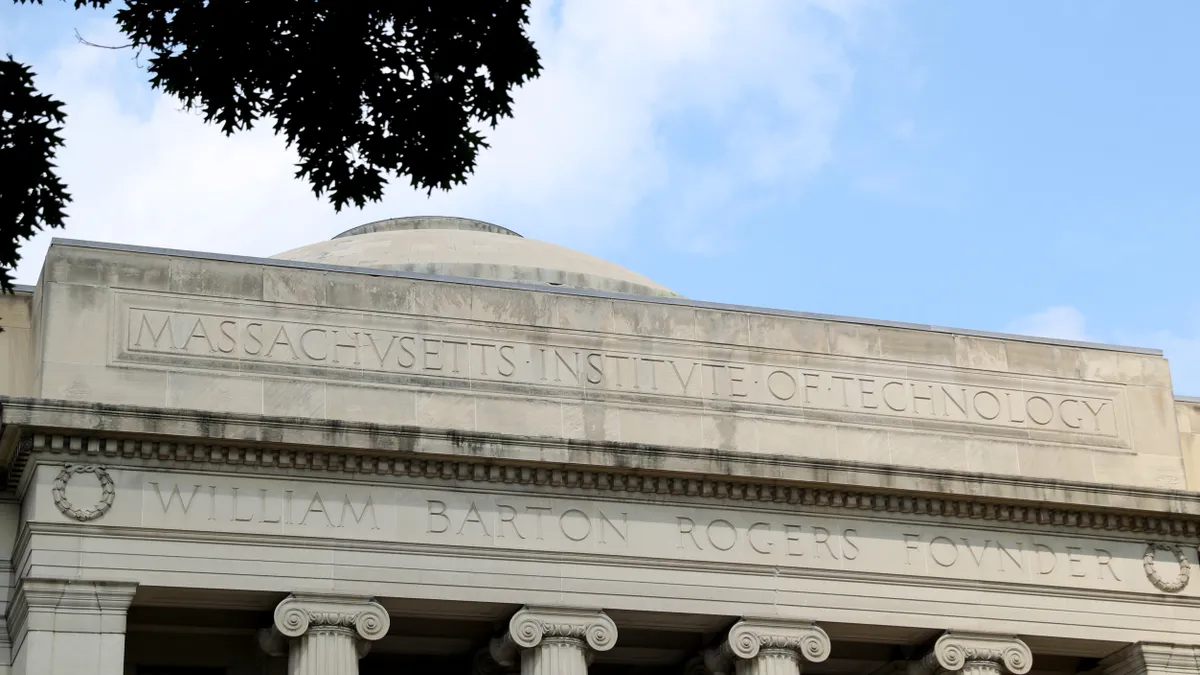Dive Brief:
- The coronavirus has followed students back to campus, with several colleges that reopened their grounds reporting case counts in the hundreds or more.
- Some of those institutions have asked students to leave campus, while others have kept learners in place but shifted to remote instruction.
- Temporarily taking classes online gives colleges the chance to control case numbers and either continue in-person or more safely remove students from campus, experts say.
Dive Insight:
More than 1,000 students at the University of Alabama tested positive for the coronavirus during the first two weeks of classes, though none were hospitalized as of an Aug. 28 announcement. Nearly 300 Utah State University students were quarantined after the virus was found in residence hall wastewater samples. And at the University of Notre Dame, in Indiana, an early jump in cases triggered a temporary shift to virtual instruction.
Nationwide, at least 26,000 cases and 64 deaths have been linked to colleges since the start of the pandemic, a New York Times analysis found. Those fold into the more than 6 million confirmed cases in the U.S. as of Wednesday afternoon, according to data tracked by Johns Hopkins University.
While colleges closed campuses in rapid succession when the virus hit the U.S. earlier this year, administrators are taking different tacks to address an uptick in cases on their campuses at the start of the fall term.
But it's a "very challenging balancing act," among the interests of students, faculty and other stakeholders, said Steven Agran, managing director at financial and operational advisory firm Carl Marks Advisors. While many colleges initially planned to teach on campus through Thanksgiving, Agran noted, a rise in cases among early reopeners has some reconsidering.
The University of North Carolina at Chapel Hill ended in-person instruction for undergraduates this semester and offered students the option to return home after a surge in cases during the first week of classes. UNC-Chapel Hill had previously planned for in-person instruction to wrap up by Thanksgiving.
Experts predicted other institutions would soon follow UNC's decision to end in-person instruction earlier than anticipated. Notre Dame made its announcement to switch to two weeks of virtual instruction a day later.
"Getting back is really hard," said Preeti Malani, chief health officer at the University of Michigan and an infectious disease expert. Malani cited the diversity among institution types as one reason their responses aren't uniform.
Several factors could impact a school's reaction to an uptick of cases on campus this fall. That includes whether it has adequate testing and health infrastructure, as well as the ability to contact trace, quarantine and isolate people, Malani said. Having sufficient space to spread people out in classrooms is also a factor, Malani noted.
Madeline Buitendorp, a student at Davidson College and communications director for its College Crisis Initiative, which is studying colleges' responses to the virus, expects that before sending people home, larger institutions with cases will do two weeks of remote instruction to mitigate the spread of the virus. UNC-Chapel Hill did not do that, Buitendorp noted.
But such a pause could give schools a chance to change behavior on campus or get more safety protocols in place, Malani said, adding that not having classes also prevents the mixing of people who wouldn't normally under social distancing protocols. "Once you have (students) on campus, it's not simple to turn around and just say 'Now go home,' because at least the perception of risk is quite high."
The State University of New York at Oneonta is teaching remotely for two weeks after 105 cases were detected on its campus. New state guidance requires schools there to shift to remote instruction for two weeks if they have 100 cases or 5% of the campus population infected in a two-week period; whether to keep the campus open will be evaluated at that point.
Colorado College, a private institution, is asking students to leave campus following a period of quarantine. Notre Dame, meanwhile, is returning to in-person instruction after it said new cases decreased.
Many colleges that have reopened are putting the responsibility on students for staying that way. "But as cases increase," Agran said, "it's kind of leaving a challenge for the administration not to at least shut down for a couple of weeks to mitigate and see where it takes you."














